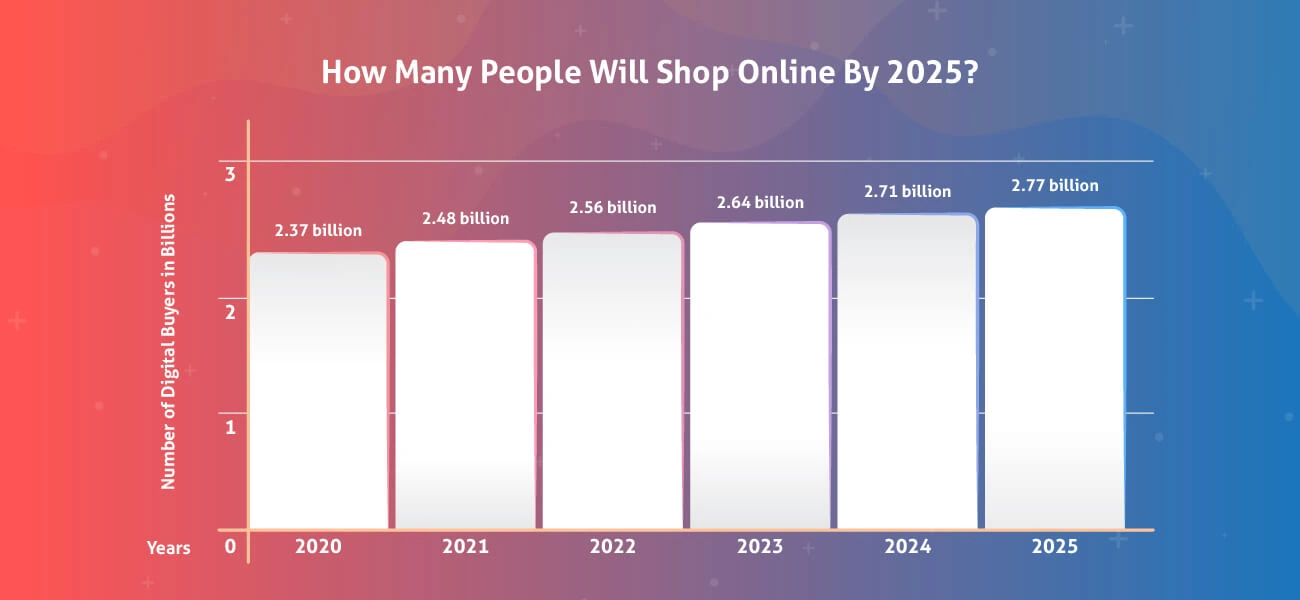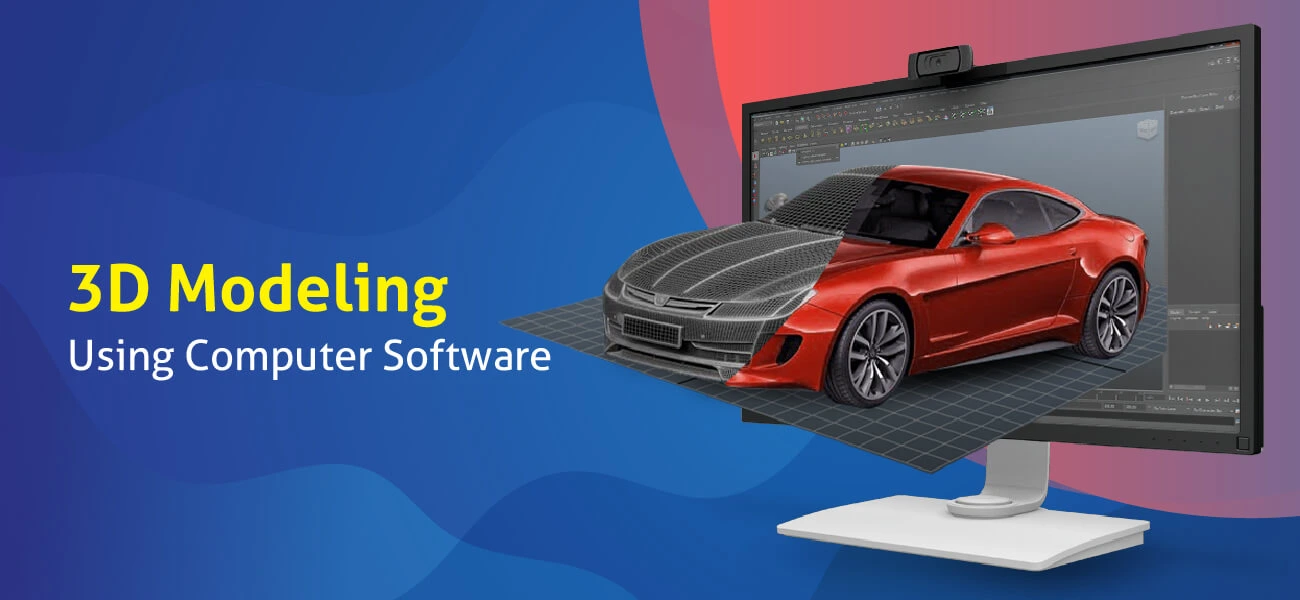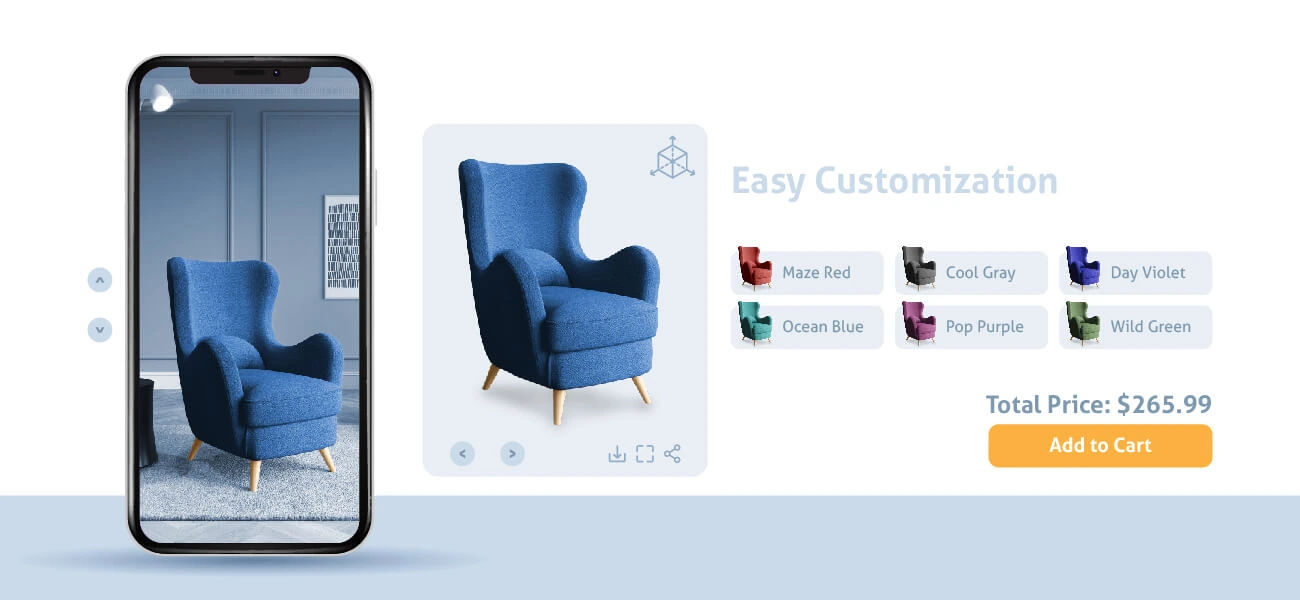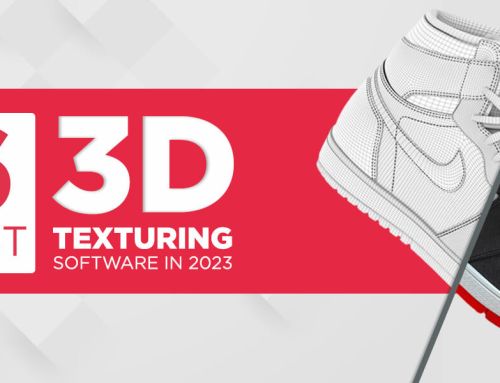3D modeling has made online shopping a more immersive experience. Online stores like Amazon now allow shoppers to get a 360-degree view of a product. Shoppers can also use augmented reality (AR) technology to visualize a product’s appearance in real life.
These days, many people prefer online shopping for almost everything. It could be clothes, footwear, food, groceries, or even medicines. There are an estimated 12 to 24 million online retailers globally. Additionally, it is estimated that around 2.64 billion people will shop online in 2023. That means 33.3% of the world’s population of over 7.9 billion is an online shopper.
So, why not leverage 3D modeling and enhance your customer’s shopping experiences by embedding 3D models on your eCommerce platforms?

Statistics by eMarketer
In this article, we will take an in-depth view of the 3D modeling benefits and how to create it.
Different methods used to make 3D models for eCommerce products
You can create 3D representations of your products in many different ways. But how do you create a 3D product model? There are different ways to create a 3D model for your eCommerce site. These include 3D scanning, photogrammetry, and using 3D modeling software.
Let’s take a look at three of these methods:
-
3D scanning
3D scanning is a process where real-world objects are converted into digital models. Here, three-dimensional data is collected by analyzing objects. The data is used to create a 3D mesh, which is then cleaned up to create a 3D model. Objects can be scanned in different ways, broadly classified as contact and non-contact.
In contact methods, sensors physically probe an object to generate a 3D scan. In non-contact methods, lights, lasers, and other particles are used to develop a 3D scan of the object. The scan is further processed to develop a 3D model of the product.
-
Photogrammetry
Seeing that photogrammetry has the word “photo” in it, you can guess what the process involves. The photogrammetry process involves photographing an object from many angles. It helps you get the dimensions (measurements) and other physical attributes, like colors. Software is then used to process the photos and create a high-resolution point cloud of the object. A 3D model is then made out of the point cloud.
-
3D modeling software

This method involves using 3D modeling software to generate 3D models for eCommerce from scratch. It is a time-consuming process, but it often gives the best results. Here, the 3D artist must create 3D models by drawing and manipulating shapes to reproduce an object. The artist often relies on photographs and measurements to create the 3D model. It requires a high level of skill.
Remember, you must apply realistic textures and lighting to your 3D models for a photorealistic look. 3D modeling only gives your product a digital grayscale look. It is not the final output. After creating the model, textures, colors, and other details must be added. Then, your 3D product model is rendered to create realistic photos for online product visualization, configuration, and augmented and virtual reality to improve engagement and increase sales.
Now, let’s take a detailed look at how 3D modeling can help your online business.
Benefits of using 3D modeling in the eCommerce industry
The bottom line
3D modeling has already become a vital ally for the eCommerce industry. Even a new term, ” ,” emphasizes this strong bond. 3D assets on your eCommerce website or online store can increase customer interactions. They allow customers to visualize your product and make the right purchase decisions. That reduces return rates and boosts customer satisfaction.
Using 3D models can also improve your brand’s image and boost sales. Early adoption of visualization technologies will help you stand apart from your competitors.
If you are worried about the costs, consider the savings you can make instead. Once the 3D models are ready, you can customize them easily. It saves you the time and money you would have spent on repeatedly designing different versions of the same product. 3D modeling before manufacturing can also help you identify flaws or other defects. This technology can help you save money in the long run. There is no downside to leveraging 3D technology in your eCommerce.
We hope this blog has helped you see the positives of adopting 3D modeling for your online business.





